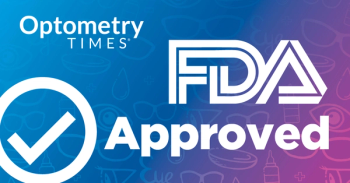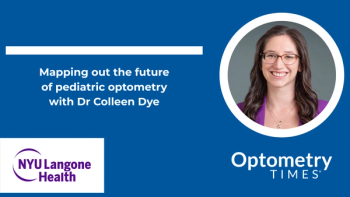
G360: Facts vs fiction in visual field testing for glaucoma
At Glaucoma 360 2025, Danica Marrelli, OD, FAAO, dove into the data on visual field testing for patients with glaucoma.
At Glaucoma 360 in San Fransisco, California, which took place February 7-8, 2025, Danica Marrelli, OD, FAAO, gave a talk as part of the optometry track, "Glaucoma testing: Fact vs fiction." Her presentation explored the role of visual field testing, specifically the use of the 10-2 versus the traditional 24-2 test in early glaucoma detection.
In an interview with Optometry Times, Marrelli noted that while the 10-2 visual field test can detect central visual field loss in a small subset of early glaucoma patients, research suggests that evaluating the central 12 points of the 24-2 test provides comparable results. This indicates that routinely incorporating the 10-2 test may not be necessary, which is significant given the increasing burden on healthcare providers. The findings reinforce the reliability of the 24-2 test, a long-standing standard in glaucoma management.
Shifting to treatment, Marrelli emphasized that optometrists are well-equipped to diagnose glaucoma and initiate first-line therapy, typically with prostaglandin analogs. However, many optometrists hesitate to escalate treatment beyond monotherapy and often refer patients to surgeons. She stressed the importance of familiarity with additional therapeutic options, including other topical treatments, selective laser trabeculoplasty (SLT), and minimally invasive glaucoma surgeries (MIGS), to ensure comprehensive patient care.
She also highlighted the need for better integration between structural and functional testing, particularly combining OCT and visual field analysis. Currently, this requires multiple steps, but a future tool that seamlessly correlates structure and function in a single test would significantly enhance glaucoma management.
Marrelli advocated for stronger collaboration between optometry and ophthalmology. She pointed out that glaucoma specialists prefer focusing on surgical interventions rather than routine disease management, which positions optometrists to play a crucial role in ongoing care. As the number of ophthalmologists remains stagnant and the aging population increases, optometrists must be prepared to take on greater responsibility in diagnosing, monitoring, and managing glaucoma effectively.
Ultimately, her talk underscored the evolving role of optometrists in glaucoma care and the importance of leveraging current diagnostic tools and treatment strategies to optimize patient outcomes.
Key takeaways
- The 10-2 visual field test can detect central visual field loss in some early glaucoma patients.
- However, analyzing the central 12 points of the 24-2 test provides similar results, reducing the need for routine 10-2 testing.
- The 24-2 test remains a reliable standard, helping minimize unnecessary additional testing in an already burdened healthcare system.
- Optometrists are comfortable diagnosing glaucoma and initiating first-line therapy with prostaglandin analogs.
- Many optometrists hesitate to escalate treatment beyond monotherapy, often referring patients to surgeons.
- Optometrists are well-positioned to handle diagnosis, treatment, and disease monitoring before surgical intervention is needed. Staying informed about diagnostic tools and treatment strategies is critical to meeting future demands in patient management.
Newsletter
Want more insights like this? Subscribe to Optometry Times and get clinical pearls and practice tips delivered straight to your inbox.



















































.png)


